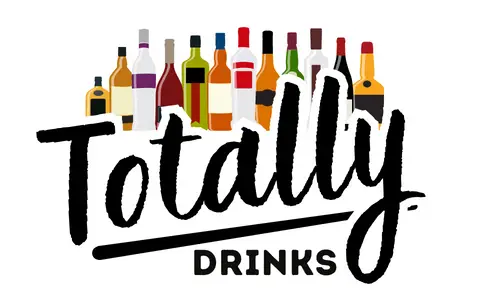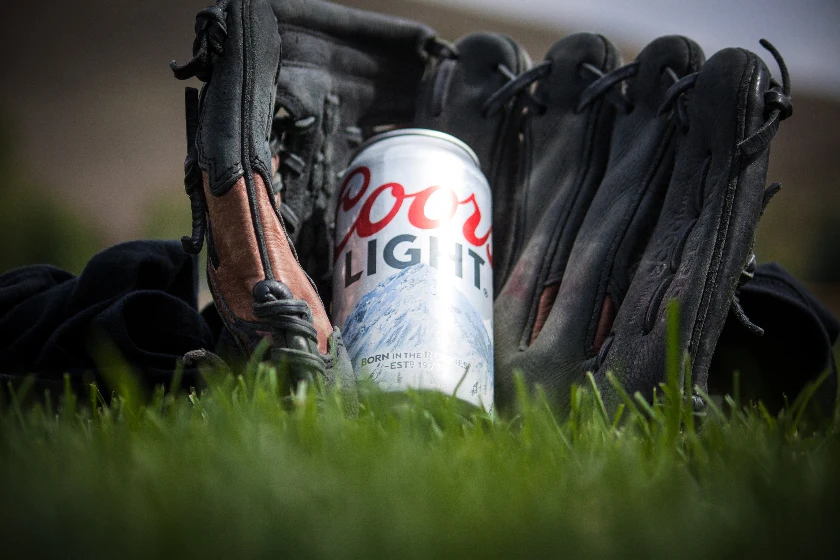
If you’re an American beer drinker who has traveled to Europe, you may have noticed a distinct lack of light beers on offer. Unlike in the United States, where brands such as Coors Light and Bud Light dominate the beer market, light beer is not as popular in Europe. So, why doesn’t Europe have light beers like the USA?
The primary reason behind the lack of light beer in Europe is cultural differences. Europeans tend to place more value on the depth of taste in their beers rather than being refreshing and having fewer calories. In contrast, American beer makers have found a huge market in low-calorie light beers.
In this article, I’m going to explore the reasons behind this difference in beer preferences between the two continents – and answer that old question – is European beer actually stronger than US beer?
Whether you’re a beer enthusiast, a curious traveler, or just someone interested in the cultural beer differences between the US and Europe, read on to find out more.
So Why Is There No Light Beer In Europe?
To avoid confusion let’s get our definitions of “light beer” aligned. Most Americans use this term to describe a beer that has reduced calories such as Bud Light and Coors Light. In Europe, the term “light beer” tends to be used for beers that have a low alcohol content instead.
I’ll continue talking about light beers as those with low-calorie content for the rest of this article, just to be clear.
One major factor why there are not many light beers available in Europe is the cultural differences between the two continents.
Europeans see beer as a traditional beverage with deep roots in local and regional cultures. Beer brewing has been a part of their history for centuries, and many communities take pride in their local beer traditions. As a result, there is a greater emphasis on taste and quality over low-calorie content and light taste.
American culture is to enjoy refreshing beers with friends on a hot day or watching a game. Big marketing budgets then push light beers which keep the biggest brands at the top and so the culture continues.
Check out my full comparison of American vs European beer to see all the differences in types, strengths, and culture.
Another factor for less light beer in Europe is the regulations surrounding beer production. The Reinheitsgebot, a German beer purity law dating back to the 16th century, stipulates that beer can only be brewed using water, barley, and hops.
This leaves no room for low-calorie additives/sweeteners like corn syrup or rice that are often used in American light beers. As a result, some European brewers have less flexibility to create lighter beers that meet the taste standards of local beer drinkers.
Not all beer in the US is light though. In the past few decades, craft beer has exploded which offers a much more robust and diverse flavor profile. From IPAs, stouts, sour beers, and other hoppy pale ales. Tastes and trends are moving away from the typical light beer.
- Find out which American beers are the most popular in other countries.
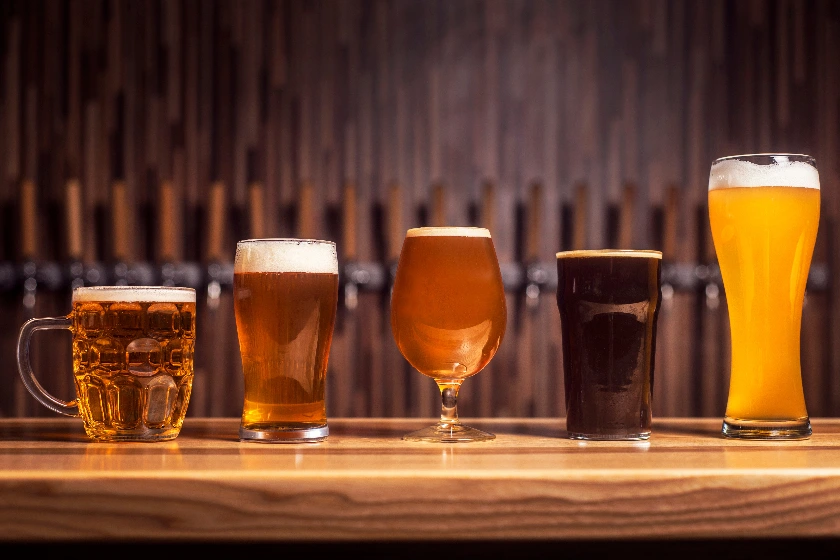
What Makes A Light Beer Vs Regular Beer?
The main differences between light beer and regular beer are the calorie count and lighter taste. The lighter brew typically contains fewer calories which is achieved through various methods.
These include using fewer grains during the brewing process, adding different enzymes to break down the sugars, or using alternative sweeteners such as corn and rice.
As an example, a typical light beer made in the US may have anywhere between 60-120 calories per 12-ounce serving, while a regular beer can have 150-200 calories or more.
Another difference many beer drinkers may notice is that the lower calorie content often results in the lighter brew having a thinner, less full-bodied taste. However, some examples are now being brewed to mimic the taste of a regular beer by using different hops or grains to achieve a similar taste profile
Do Other Countries Other Than USA Drink Light Beer?
Luckily for American travelers, light beer is consumed in other countries besides the USA, although it may not be as popular as it is in the States. In some countries, light beer is marketed as a healthier alternative to regular beer.
This appeals to health-conscious consumers who are looking for ways to limit their calorie intake while still enjoying a social drink.
In the UK, Coors Light and Bud Light are being advertised fairly heavily and they are gaining popularity. You can now often find a light beer offered on tap in a pub in England. You can also buy Coors or Bud cans from any large grocery store.
In Australia, the Carlton Dry brand offers a low-carbohydrate, low-calorie beer, while in Japan, Asahi offers a “Clear Asahi” beer that is marketed as a light and refreshing alternative to regular beer.
In Canada, the “light” versions of popular brands like Molson and Labatt are widely available, and in Mexico, the “light” version of Corona is an option.
I took a look at one of the large German online grocery stores to see what could be found there. There were no light beers to be found – pretty much all traditional German beers.
Overall, while light beer may not be as popular in other countries as it is in the United States, there are still many options available for those who prefer a lower-calorie beer.
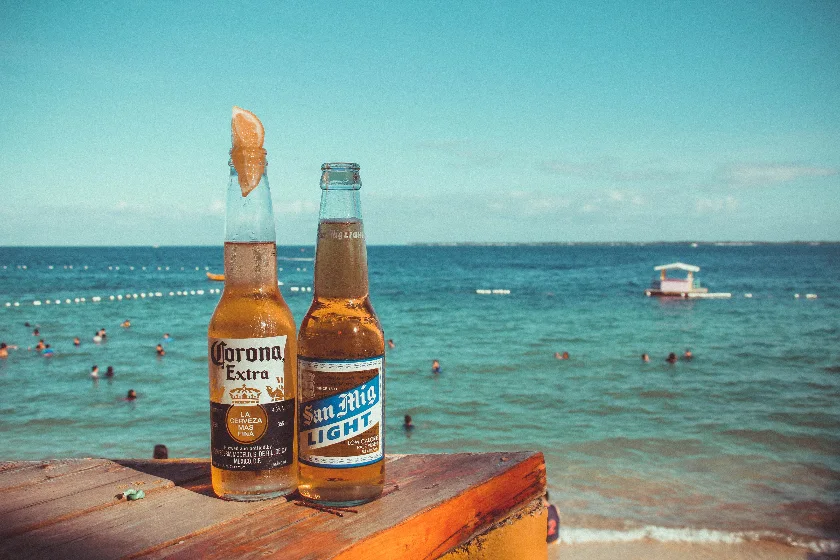
What Equivalent Beers Do Europeans Drink?
Apart from the occasional Coors or Bud Light imports, there are very few exact equivalents to American light beers in Europe, there are some beers that come close in terms of their lower calorie and alcohol content. Here are a few examples:
- Heineken Light: While not as popular in Europe as it is in the United States, Heineken Light is a lower calorie, lower alcohol version of the popular Dutch beer that is available in some European markets. It’s brewed using a special process that reduces the calorie and alcohol content while maintaining the same taste.
- Michelob Ultra: Similar to Heineken Light, Michelob Ultra is a light beer that is available in some European countries.
- Other Low-Alcohol Beers: In many European countries, there are a variety of low-alcohol beers available that contain less than 3% alcohol by volume. These beers are brewed to have a similar taste to regular beer, but with less alcohol and often fewer calories
- Mass-produced lagers: While not as light in calories, most people who drink beer for the social aspect of it usually go for an easy-drinking lager that isn’t too strong. Examples include Carlsberg, Becks, Carling, Moretti, or Estrella.
Overall, while there are few equivalents to American light beers in Europe that are popular, there is still a variety of lower calorie and lower alcohol options available for those who are looking for a lighter beer option.
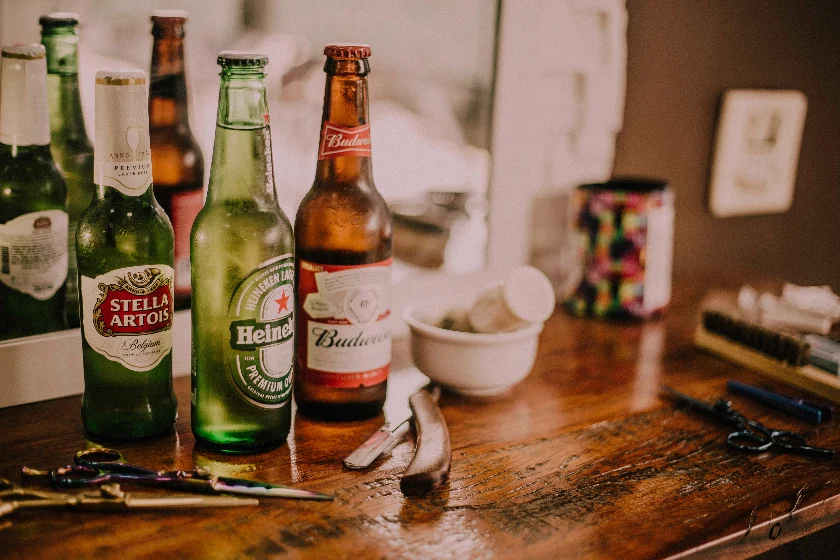
Is American Beer Actually Weaker Than European?
When comparing regular beers across the two continents, you may be surprised to learn that there is not really that much of a difference between the average beer strengths overall.
Most commercial lagers in Europe, like Heineken (5%), Carlsberg (3.8%), and Guinness (4.2%) all match similar commercial beers in the US like Budweiser (5%), Bud Light (4.2%), and Coors Light (4.2%).
When I compared a bottle of Budweiser in the UK and Budweiser in the US, the American version was actually stronger at 5% vs 4.5% (research from online grocery stores Tesco and Walmart).
You often get stronger beers in Germany and Belgium where your everyday pilsners and blonde beers range from 5-6% – so these countries could be seen as higher.
But as you would expect there are plenty of examples on both sides of the Atlantic of beers with high ABVs, especially when you look at the craft beer movement in America. One example is Dogfish Head’s 120 Minute IPA from the brewery in Milton Delaware, which has an alcohol content of 18%!
Additionally, American beer has won numerous awards in international beer competitions, showing that the quality of American beer is up there with European beer.
Keep in mind that when comparing a light beer in America to a light beer in Europe, you will often find that the American varieties have a higher ABV (alcohol by volume) content. This is because a “light beer” in Europe is often a low-alcohol version, whereas in the U.S. it’s a low-calorie version.
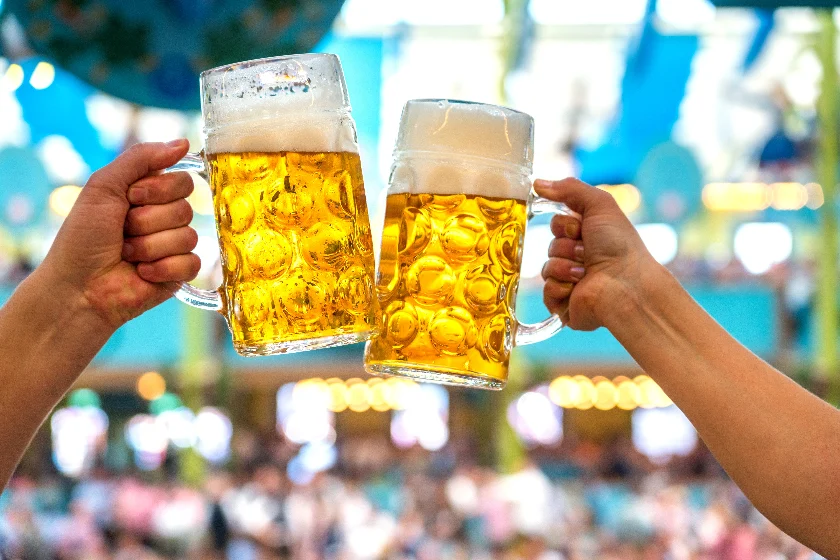
Conclusion
I hope you now have a good idea about why there isn’t so much light beer in Europe and how the European take on light beer differs from the U.S.A.
While light, low-calorie beer is popular in the US, Europeans tend to value the taste and quality of their beers over their calorie count.
However, this doesn’t mean that European beer is superior to American beer – both markets offer a wide variety of high-quality beers to suit different tastes and preferences.
Just make sure to check the label when you order a light beer on your next trip to Europe to make sure it’s what you expected.
